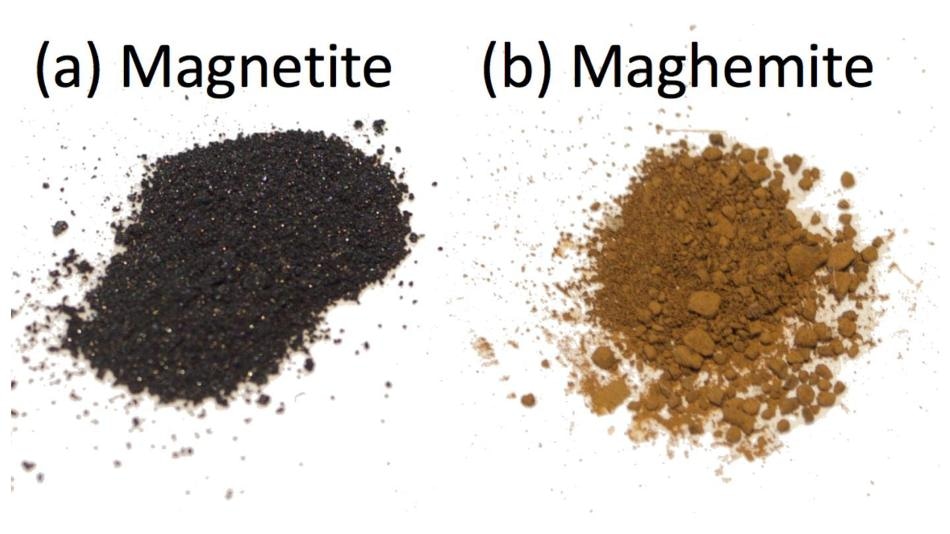Sep 28 2018
Iron oxide nanoparticles are used in iron replacement therapy, sentinel node detection, and other biomedical applications. A new research aims to understand how these materials age, and how aging may alter their safety or functional profiles.
 In bulk powders, the oxidation of magnetite to maghemite is shown by a change in color from black to red, but in nanoparticles, it is not nearly so easy to distinguish the two phases. (Credit - Lara Bogart)
In bulk powders, the oxidation of magnetite to maghemite is shown by a change in color from black to red, but in nanoparticles, it is not nearly so easy to distinguish the two phases. (Credit - Lara Bogart)
For the first time ever, lab-based Mössbauer spectroscopy has been integrated with "center of gravity" analysis, thereby enabling scientists to quantify the diffusive oxidation of magnetite into maghemite and monitor the process. In Applied Physics Letters, by AIP Publishing, the research is poised to help comprehend the aging mechanisms in nanomaterials, and how these effects alter the way they interact with the human body.
"It's almost an unasked question about how this material oxidizes over time," said Dr. Quentin Pankhurst. "We need more information about it. This technique helps us know what's happening as products are sitting on the shelf."
Differentiating the two forms of iron oxide nanoparticles is very difficult that it has led to an informal convention of naming samples "magnetite/maghemite" when their composition is not identified. Mössbauer spectroscopy uses nuclear gamma rays to calculate how much of a sample contains iron atoms with the +2 charge found in magnetite compared to the +3 charge that predominates in maghemite. These subtle measurements are processed with center of gravity calculations, and together the data offers a larger picture of the sample.
Furthermore, the test does not damage samples, so scientists can monitor the oxidation of iron oxide nanoparticle across a long time period.
Going forward, the team is keen to extend its method to a wider range of magnetite and maghemite samples and help other scientists better comprehend how a nanomaterial's age correlates with its functional features.
"We've raised a question about whether the oxidative aging affects the particles, but we haven't seen if that's the case or not," he said. "Now there's this idea that aging is going on, and that's a whole other parameter we haven't been measuring. I'd be delighted if other people explored this correlation between function and aging in their own materials."